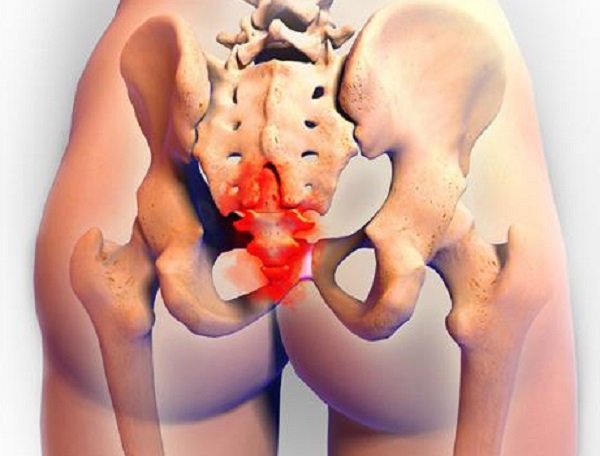Are women more sensitive to pain? The question has been bandied about for years. Study after study answers affirmatively. Yes, women are more sensitive to pain. Not only that, women experience more pain than men for similar injuries and require more pain medication to achieve the same level of relief. And oh, by the way, for some strange reason, women suffer from more abdominal pain than men.
The question itself is encumbered with an all-knowing cultural and political ennui that subsumes the very possibility of an accurate answer. Instead it directs us toward the expected, and ultimately, uninteresting psychosocial babble; of course, women are more sensitive to pain, let us simply count the ways. While it is true that women do indeed require more pain medication than men and suffer from more abdominal pain than men, it rarely seems to occur to those conducting this research to re-frame the question from the tacit approbation of female ‘sensitivity’ to why might women require more pain medications than men. What is it about the medication or the female physiology that renders pain medications insufficient in women. Well, let me count the ways.
Pain Medications Designed by Males, for Males, with Males
Exclusive of the pain medications discovered accidentally, like the early opium-based or morphine derivatives on which no research was ever conducted, most pain medications developed in the 20th century were never tested on women. Indeed, women were prohibited from being included in clinical trials until 1993-1998. (Instead, we simply gave women the meds and hoped for the best). Even post 1998 when the new regulations were implemented to permit women in clinical trials, there were no requirements for drug developers to analyze the data based on sex and determine if a particular medication worked better or worse in women or even if the medication had more or different adverse events for women. As a result, many researchers have noted that women suffer disproportionately more adverse events per capita than men and that those adverse events are often quantitatively more serious. For more details, see: Women in Clinical Trials – So That’s Why My Meds Don’t Work.
Even in early medication development, the animal research, uses males to develop and test the efficacy of a particular medication. A recent report suggests that 79% of all animal studies published over a 10 year period in the journal Pain, were done on male rodents. Only 8% used both males and females and only 4% tested the response differences between males and females. As the comments in this pain post suggest, testing on female rodents is expensive and difficult because of the animal’s estrus cycle (menstrual cycle for humans) – e.g. the hormone changes are rapid and complicated. It’s much easier and less costly to measure in male rats.
I would argue, adverse events in human females are exponentially more costly and difficult than conducting the appropriate research early in development. However, with the exception of the class action fines that pharmaceutical companies pay, it is not often that the pharmaceutical company – the drug developers – must bear the brunt of the early research costs or even bulk of the adverse event costs. Rather, it is governmental agencies that fund early stage research and insurance companies, governmental and private, respectively, who pay for the negative outcomes. With this bit of a misalignment that means no one pays for or is accountable for, what perhaps, could be avoided, if funds were allocated in the earlier testing phases.
Given that so few pain medications were developed using females (rodent or human), it is entirely possible that many pain medications simply do not work as well or even by the same mechanisms in females versus males. There is some evidence that this is true. Researchers have noted that while standard morphine type medications (opioid agonists) don’t work as well in women as in men, other medications appear to work better, such as the opioid agonist-antagonist butorphanol or pentazocine – pain killers that work on different types of receptors and by different mechanisms.
Female Biochemistry, Pharmacokinetics and Pharmacodynamics
What is it about the female physiology that makes some medications less effective than when given to males? Well, to state the obvious, females are genetically, physiologically, structurally and biochemically different than males. Why would anyone presuppose that placing a compound into two discretely different environments would exact the same response? And yet, that is exactly what we do.
Drug disposition is sex-specific. How a drug moves through the body (pharmacokinetics)and what effects it elicits (pharmacodynamics) are determined by number of factors, most of which differ significantly in males and females. In one of the better written reviews of Sex Differences in Drug Disposition, researchers note that even in the few studies with sex-analytics, it is clear that women process drugs differently than men.
- Drug transit through the GI tract is considerably longer in women than men (91.7 hours versus 44.8 hours).
- Bile acid composition is different and acidity levels are different
- Women show a higher maximum dose and AUC 87% and 71% of the time
- CYP enzymes (the enzymes that break down drugs in the liver) vary with some variants consistently increased and others decreased by sex.
- Food by medication interactions vary directionally by sex – that is they are not consistent, some increase metabolism, some decrease metabolism
- Sex differences in kidney function
- Sex differences in liver function
- Sex differences in pain and opioid receptor density and activity
- Women exhibit different pharmacodynamic profiles for a wide array of drugs
- Cycling hormones dynamically change drug metabolism (pharmacokinetics) and drug effects (pharmacodynamics); pregnancy hormones change these drug parameters even more radically
Bottom-line, women are different than men. Existing medications need to be tested in women to see which ones work and which ones don’t, and then, prescribed accordingly. New medications should be developed for these differences. (Imagine, a whole new market by simply recognizing the obvious differences in the population). For medications already in development, sex analytics must be conducted before the drug is released.
Are women more sensitive to pain? Probably not, but we have different types of pain (frequently, undiagnosed or misdiagnosed and chronic) and respond differently to pain medications than men.
We Need Your Help
Hormones Matter needs funding now. Our research funding was cut recently and because of our commitment to independent health research and journalism unbiased by commercial interests we allow minimal advertising on the site. That means all funding must come from you, our readers. Don’t let Hormones Matter die.
Yes, I’d like to support Hormones Matter.
This article was published originally on Hormones Matter on June 27, 2013.
















Here is a statement – Women experience more pain than men. Just looking at the images for this blog post. The shoes. I know which pair my feet prefer to wear. I see women everywhere wearing high heels with squishy toes and I can see the pain on their faces as they walk.